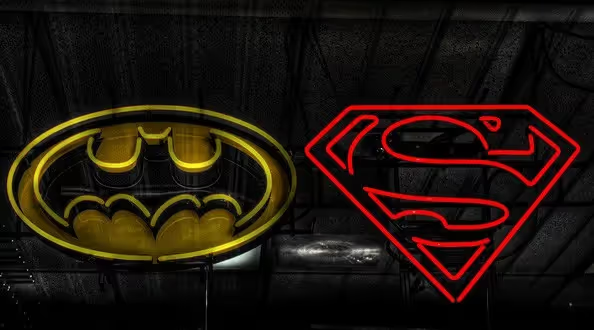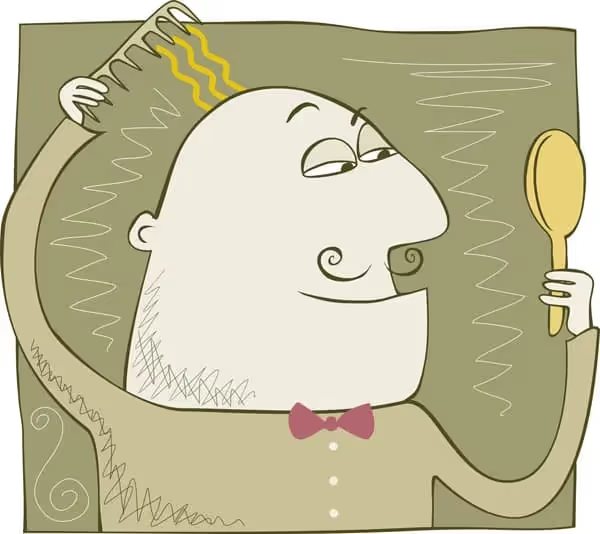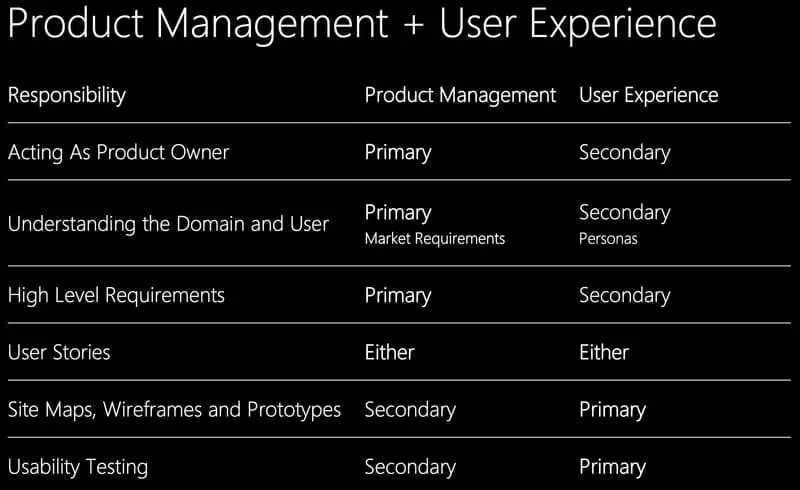How to Work Effectively with UX Designers

Batman v Superman. UX v Product.
[caption id="attachment_2004563" align="aligncenter" width="551"]

via Jordan Lackey, flickr[/caption]The roles of Product Managers and UX (User Experience) Designers can appear so similar that tensions can build easily in the organization. Fortunately, like a fight between our two favorite superheroes, you just know they will join forces in the end to become an unstoppable force for good.
“Although UX Designers are more on the ‘craft’ side and PMs are...‘management’, both roles can, if not clearly divided, be in unfortunate opposition to each other. That’s a situation that always hurts the product.”
-Marcin Treder, CEO of UXPin, in his article on the differences between Product and UX
Product Managers and UX Designers have the same goal and similar competencies. They both understand the user, create experiences that solve their needs, and iterate based on analysis. In the same vein, Batman (PM in our analogy) and Superman (UX) both fight crime, but bring a different skillset and idea of how things should be done. You can see why they might butt heads.Batman understands the realities on the ground. He creates practical tech solutions to problems and knows how to work with his butler, commissioner and side-kick to just get things done. Superman, on the other hand, brings a powerful set of abilities and empathy. He embodies more holistic ideals and experiences, which are important for the long-term success of the world and for shaping people’s feelings about how their problems are being solved.Effectiveness at solving problems and getting things done with a team (Product Management) vs. ideals and creating a quality of experience in the long-run (UX Design). Sound familiar?Let’s take a look at the ways Product Managers and UX Designers can form a great team.
1. Leave Egos At The Door

I have quoted Wealthfront CEO Adam Nash before from this panel on Product Management and I will again: “Software is a team sport.”No one can create and continue to develop an incredible product experience on their own. Yes, in a 4-person team or startup, the Product person and UX person is often the same by force of circumstance, but that is not going to work well once you hit even 20 people.Once you start dealing with multiple stakeholders, more complex financial considerations, a move towards corporate strategy, and a more fully-formed marketing strategy, it is time to split the role of Product and UX and recognize that each has their own capabilities. That means, while you will be collaborating, you must know and own your lane.As a Product Manager, you have responsibility without the authority of an exec (sorry), so you need to be able to lead by influence. Trying to force people to see you as the sole source of vision, execution, and user experience decisions is a sure way to compromise that influence. In his post on why most product managers suck, Vik Singh, CEO of data science platform Infer, notes that “Good PMs know that the ‘manager’ part of their title is a misnomer, and can build respect...without formal authority.” If stepping on engineers toes is a bad idea, then stepping on a UX Designer’s toes is equally harmful to how your team operates. As Vik puts it: “Just because you can doesn’t mean you should.”
2. Design Is Your Product, So Respect The Designers
“For your consumers, design is your product”
-UXPin’s User Experience Guidebook for Product Managers
While we generally think of UX design as the “look” of the product, “User Experience” actually encompasses all aspects of how your users interact with your product - from how they physically navigate your product, to how useful it is for their particular needs, to how they emotionally feel while using it. This applies to B2C and B2B products alike (see here for a list of great posts on the importance of UX in B2B). Given the holism of user experience, you should really, then, think of UX as being your product.User Experience is affected by the entire team — after all, product, marketing, sales, and customer success all interface with users. As a Product Manager, one of your jobs is collecting and defending your team’s ideas, but also ensuring they align with the vision and goals of the entire organization. It will require a variety of perspectives and understandings of your user to ensure you can make a great UX - and a great product.The UX Designer has the key perspective that a PM will want to leverage. They are focused on assessing the experience of users, discussing a possible solution to their problems with Product Managers and other teams, then designing it as a result of that discussion. Your role is to collaborate with them and translate the unique insights you've gathered to the rest of your team.
"Product Management with no User Experience Design creates functional products that don't make users excited. User Experience design with no Product Management produces delightful products that don't become businesses."
-Melissa Perri, Changing the Conversation about Product Management VS UX
It is easy to think that, as a Product Manager, you understand your user the most and therefore best understand the User Experience. You might think that you can just send your wireframes to a graphic User Interface (UI) Designer and just tell them to make it look good. Great Product Managers, however, understand where their skills end and where they can be amplified by the rest of the team. No one person understands the user completely, and certainly no one person can be the best at both art and execution. If it seems that the PM is the only person in your organization that understands the user, your team has bigger problems.
3. Define The Roles of UX and Product
The thing about defining roles in an evolving company is that it is never straightforward. However, this means that it is even more important for avoiding conflict points to properly define and understand the role of UX and Product.The team at UXIsNotUI has made a fantastic observation about the differences in perception about the role of UX:

However, the perception gap goes both ways. Marcin Treder, the CEO of UXPin and a UX Designer himself, actually falls into this trap as he writes about the division of responsibilities between UX and Product (although in practice I am sure he gets the nuances). For a UX Designer, the common perception is that the Product Manager should handle “Scope Planning,” “Customer Development,” and “Execution,” while the UX Designer will handle the “User Research,” “Prototyping,” and “Usability Studies.” As PMs, we know that we have to participate in these functions as well.The reality is that these responsibilities do not belong to either Product or UX exclusively, but that some are their primary responsibilities, while others are secondary.Patrick Neeman and Stephanie Bergman at Pragmatic Marketing frame the division of Product and UX roles this way in their “Dogs and Cats” presentation on UX and Product:

Defining these roles with your teams to understand where the buck stops on each issue will move you towards a superhero Product + UX team.
Skills v. Roles
Melissa Perri puts it best in her post on Changing the Conversation about Product Management and UX: "It's not about roles, it's about skills. I've found the definition of roles matters less than how a company operates."As you will see in my Design Sprint experiment with HourlyNerd in the next section, whoever is best suited to get a specific task done in a collaborative team should have the opportunity to do it. Sometimes the UX designer will do research, sometimes the PM, but hopefully they will both be able to work on it together.
Collaboration Case Study: A Design Sprint Experiment
When I started on the Product team for HourlyNerd - a marketplace for freelance consultants - the first thing I did was go around and meet all of the teams to try to understand what each of them currently did, their vision for the organization and product, and how they think things should be done. At the time, HourlyNerd was transitioning from a 40-person startup driven by the founders and product managers to a more mature organization with a new Creative Director and UX Designer.When things are moving so fast, focusing on process and collaboration methods can be tough. I started a conversation with the new Creative Director and the Product team about how we can develop a leaner, user-centric, and collaborative UX Design process. This did not happen overnight, but we kept the discussion going and eventually began to implement and adapt different methods. We successfully tested our own variations on the Google Ventures Cross-Functional Design Sprints, which involved UX, Product, and - for the most important projects - even Sales, Engineering and Executive Teams.This is how we thought things would play out:
- The Product team would bring the data and business needs.
- The UX team would bring creative and interaction design concepts.
- The other teams would bring anecdotes about users, and founders would bring business goals.
This is how things actually played out:
- The Product team presented data and business goals, but also had UX concepts. They brought UX tear-downs of competitors and wireframes.
- The UX team brought light to how this project fit into the overall experience for a user and the brand overall (since they also designed other parts of the product). They brought important UX best practices, but were also very open-minded to other ideas for UX designs from other teams.
- The other teams not only brought user anecdotes, but also some great UX insights, inspiration from other products, and a check on any disagreements between Product and UX.
At the end of a sprint, the Product Manager running the project and the UX team would get together and compile what was learned into a handful of storyboards. The UX Designer would design an interactive prototype mockup in InVision in collaboration with the PM, and they would be tested with users and iterate until a concept was good enough to develop.As you can see, the Product Manager may have been the point person for the project, but their job was not to authoritatively direct the project. Instead the PM discovered that integrating ideas from all teams was the most effective way plan and execute a product. This could not have been done without collaboration and trust in the UX team.
In Sum: Be a Dynamic Duo
As the product point person, you are responsible for being the team’s window into the larger company. This is an opportunity for you to start developing a way of working with UX Design based on your skill-sets. You are actually a resource to the UX Designer, since you can help speed up the validation of their concepts, by framing them in terms of user needs and in the team’s resources. As the point man, you can also help communicate and solicit feedback on their contributions, framing them in the whole business context. You will work collaboratively on certain parts of this process, as well. The UX Designer’s vision for the ideal user experience combined with the Product Manager’s understanding of user and business priorities will help the entire team iterate quickly and effectively. The result is a better team and a better product.

